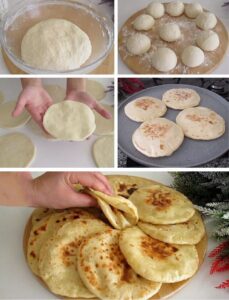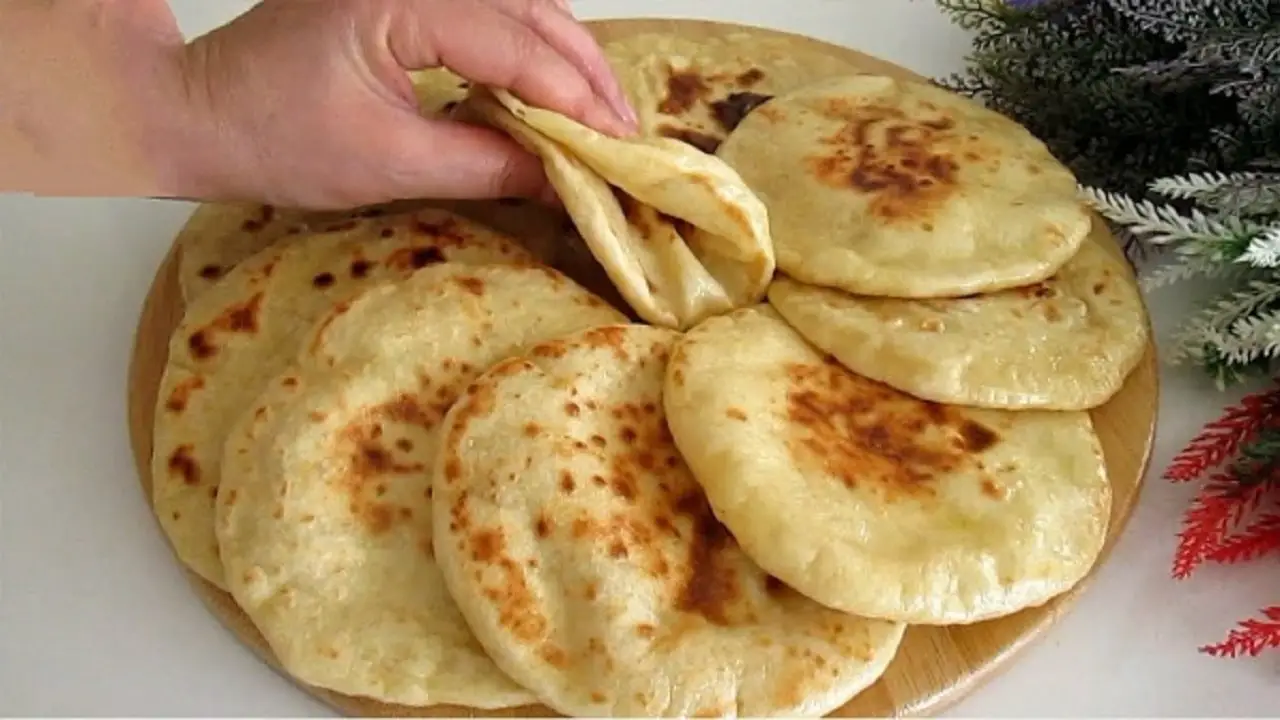In today’s fast-paced world, the allure of quick and easy recipes is undeniable. This article dives into the simplicity and satisfaction of creating homemade bread in just 10 minutes. Ideal for those with a tight schedule or novices in the kitchen, this guide will walk you through making fresh, delicious bread with minimal effort. From the essential ingredients to step-by-step instructions, alternative ingredients, and some mouth-watering variations, get ready to transform your baking experience.
Introduction
Bread-making is often viewed as a time-consuming task, but what if you could enjoy fresh, homemade bread in just 10 minutes? This article explores a straightforward bread recipe that is perfect for busy lifestyles or baking beginners. Using simple ingredients and quick techniques, you’ll discover how effortless and rewarding it can be to make bread from scratch. Let’s embrace the warmth of homemade bread without the usual wait, proving that good things don’t always require patience.
Print
Bread Recipe in 10 Minutes
Description
Ingredients
- 4 glasses of flour (480 g)
- 1 glass of yogurt (220 g)
- 1 glass of water (200 ml)
- 1 pack of baking powder (10 g)
- 1 teaspoon of salt (8 g)
- 1 tablespoon of vegetable oil (10 ml)
Instructions
Let’s add yoghurt, water, baking powder to the kneading bowl and mix.
Let’s add flour, salt and oil in a controlled manner and knead a soft dough.
Let’s divide the dough into 10 equal pieces and cover it.
Let’s roll out the meringues to the size of a dessert plate with the help of a rolling pin.
Let’s cook it by turning it on both sides in an oil-free and preheated pan.
Let’s spread butter on it and serve.
Bon appetit to those who try it.
Essential Ingredients
When it comes to whipping up bread in a flash, having the right ingredients on hand is crucial. For this 10-minute bread recipe, the simplicity of the ingredients ensures that anyone can make it with ease. Here’s what you’ll need:
- 4 glasses of flour (480 g) — The base of your bread, providing structure and volume.
- 1 glass of yogurt (220 g) — Adds moisture and a slight tanginess to the dough, enriching the flavor.
- 1 glass of water (200 ml) — Necessary to bring all the ingredients together into a smooth dough.
- 1 pack of baking powder (10 g) — Acts as a leavening agent, helping the bread rise quickly without the need for yeast.
- 1 teaspoon of salt (8 g) — Enhances the flavors of the other ingredients.
- 1 tablespoon of vegetable oil (10 ml) — Improves the dough’s texture and helps in the cooking process.
- Olive oil (50 ml) — Used for cooking the bread, adding a subtle flavor and golden crust.
With these ingredients, you’re set to create a delicious bread that doesn’t just fill the kitchen with its enticing aroma but also brings a touch of homemade comfort to your table in mere minutes.
Step-by-Step Recipe Instructions
Making bread in 10 minutes might sound like a culinary shortcut, but it’s all about smart cooking with effective techniques. Follow these straightforward steps to ensure your bread is not only quick to make but also delicious and satisfying.
Preparation and Kneading
- Start the Dough: In a large kneading bowl, combine the yogurt, water, and baking powder. Stir these together until the baking powder is fully dissolved and the mixture is uniform.
- Add the Dry Ingredients: Gradually add the flour, salt, and vegetable oil to your mixture. Pour in the flour slowly to avoid clumping and ensure a smooth consistency. As you add the flour, begin to knead the dough in the bowl, incorporating all the ingredients thoroughly.
- Knead to Perfection: Continue kneading until the dough is soft and no longer sticks to the sides of the bowl. The dough should feel elastic and pliable, which might take a few minutes of kneading by hand.
Rising Time
- Divide and Rest: Once your dough is ready, divide it into 10 equal portions. Cover these pieces with a clean kitchen towel to prevent them from drying out. Allow the dough to rest for a few minutes; this brief rest period makes the dough easier to handle and roll out.
Cooking
- Shape and Cook: Take each piece of dough and roll it out on a lightly floured surface to the size of a dessert plate. Use a rolling pin to get an even thickness.
- Heat the Pan: Warm a large, non-stick pan over medium heat. Once hot, place the rolled-out dough in the pan.
- Cook Until Golden: Cook the bread for about 2-3 minutes on each side or until each side is golden brown and slightly puffy. No oil is needed in the pan, as the dough itself contains oil.
Finishing Touches
- Add Butter for Flavor: After cooking, while the bread is still hot, you can choose to spread a little butter on each piece. This step is optional but adds a lovely richness and flavor to the bread.
There you have it—a quick and easy bread recipe that brings homemade goodness to your table without the usual lengthy preparation. Enjoy your bread warm, perhaps with a smear of butter or your favorite spread.

Alternative Ingredients and Substitutions
Whether you’re accommodating dietary restrictions or simply experimenting with flavors, it’s easy to adapt this 10-minute bread recipe with various substitutions. Here’s how you can modify the recipe to suit different preferences or pantry availabilities.
- Flour Varieties: While the recipe calls for regular flour, you can substitute it with gluten-free flour to cater to gluten sensitivities. Whole wheat flour can also be used for a heartier texture and increased fiber content.
- Dairy-Free Options: If you’re avoiding dairy, replace the yogurt with a dairy-free alternative such as almond, soy, or coconut yogurt. These substitutes will maintain the moisture of the bread while keeping it dairy-free.
- Baking Powder Alternatives: In case you run out of baking powder, a mixture of cream of tartar and baking soda can serve as a homemade leavening agent.
- Salt Variations: Sea salt or Himalayan pink salt can replace regular table salt for a different mineral profile and a subtle flavor change.
- Oil Choices: Olive oil gives a distinct flavor to the bread, but if you prefer a milder taste, vegetable oil or even coconut oil are excellent alternatives. For a richer flavor, melted butter can be used in place of oil.
These substitutions not only ensure that the bread meets your dietary needs but also allow you to play with flavors and textures according to your taste preferences.
Tips for Perfect Bread Every Time
Achieving the perfect 10-minute bread involves more than just following a recipe—it’s about mastering a few key techniques and understanding the nuances of bread making. Here are some expert tips to help you perfect your bread every time you make it:
- Water Temperature is Key: Ensure the water you mix with the yogurt is lukewarm—not too hot, not too cold. This helps the baking powder react better, leading to a well-risen dough.
- Consistency of the Dough: The dough should be soft but not sticky. If it sticks to your hands or the bowl, add a little more flour, a tablespoon at a time, until the consistency is right. Conversely, if the dough is too dry, add a teaspoon of water at a time until it reaches the desired softness.
- Even Rolling: When rolling out your dough, aim for even thickness to ensure uniform cooking. Uneven dough can lead to parts that are too thick and doughy or too thin and crispy.
- Preheat the Pan: Make sure your pan is properly heated before you start cooking the bread. A well-heated pan ensures a quick and even cooking process, which is essential for getting that golden brown crust.
- Do Not Overcrowd the Pan: Cook one piece of bread at a time. Overcrowding the pan can lower the temperature and lead to uneven cooking.
- Watch the Heat: Keep an eye on the heat level while cooking the bread. If it’s too high, the bread may burn on the outside before it has fully cooked inside. Adjust the flame as necessary to keep a consistent medium heat.
- Use the Right Oil: If using olive oil in the dough, consider the flavor it will add. For a lighter taste, milder oils like sunflower or even a bit of coconut oil can make a difference without overpowering the bread’s natural flavors.
With these tips in mind, you can enhance your bread-making skills and enjoy perfect results every time. Whether you’re a novice or a seasoned baker, these insights will help you refine your technique and produce delicious, homemade bread in minutes.
FAQs
Making bread quickly at home often raises a few questions, especially for those new to the art of baking. Here are some frequently asked questions (FAQs) that can help clarify doubts and provide additional guidance to enhance your bread-making experience.
Can I use all-purpose flour instead of the specific type mentioned?
Yes, you can use all-purpose flour for this recipe. It may affect the texture slightly, making it less chewy than bread flour, but it will still produce delicious results. If using all-purpose flour, ensure it’s fresh for the best rise.
Do I need to use yogurt in the recipe? What does it do?
Yogurt is not strictly necessary, but it adds moisture and a slight tang to the bread, enriching its flavor and improving its texture. If you prefer not to use yogurt, you can substitute it with a dairy-free alternative or simply increase the water and oil slightly.
What if my baking powder is old? How can I tell if it’s still active?
To test if baking powder is still active, mix a small amount with water. If it bubbles vigorously, it’s still good. Using old baking powder that doesn’t react might result in flat, dense bread, as it won’t provide the necessary lift.
My dough is either too sticky or too dry. What adjustments should I make?
If the dough is too sticky, add a little more flour, just enough until it stops sticking to your hands. If it’s too dry and tough, add a few teaspoons of water until it becomes pliable and soft.
How can I store the bread if I have leftovers?
Store any leftover bread in a bread box or wrap it in a clean cloth inside a plastic bag to keep it fresh for a couple of days. For longer storage, slice it and freeze it in an airtight container or freezer bag.
Can this bread be made in advance?
Yes, you can prepare the dough in advance and keep it covered in the refrigerator for up to a day. Let it come to room temperature before rolling and cooking as directed.
Addressing these FAQs can help ensure your success and satisfaction with every batch of bread, making the process enjoyable and the results rewarding.
Additional Bread Recipes Using the Same Dough
Once you’ve mastered the basic 10-minute bread, you might be eager to experiment with variations that add new flavors and textures to your creations. Here are a couple of delightful twists on the original recipe to enhance your homemade bread repertoire:
Garlic Bread Recipe
Transform your plain bread into a flavorful accompaniment for pasta, salads, or soups with this simple garlic bread variation:
- Prepare the Dough: Use the dough from the original 10-minute bread recipe.
- Make Garlic Butter: In a small bowl, mix together 50 grams of softened butter, 2 minced garlic cloves, a handful of finely chopped parsley, and a pinch of salt for extra flavor.
- Apply and Bake: Roll out your bread as usual, but before cooking, spread a generous amount of garlic butter on one side. Cook butter-side down first in a preheated pan until golden, then flip and cook the other side. Serve warm for a melt-in-your-mouth experience.
Pizza Bread Rolls
Ideal for snacks or a light meal, these pizza bread rolls are a hit with both kids and adults:
- Prepare the Base: Start with the original dough, rolled out into small circles.
- Add Toppings: Spread a thin layer of tomato sauce over each dough circle, leaving a small border around the edges. Sprinkle with shredded mozzarella cheese, a dash of Italian seasoning, and your choice of toppings like sliced olives, pepperoni, or diced bell peppers.
- Roll and Cook: Carefully roll up the dough to enclose the toppings. Seal the edges by pinching them together. Cook on a preheated pan until each side is golden and the cheese is bubbly inside.
These variations not only add diversity to your bread-making but also allow you to cater to different tastes and occasions. Whether you’re looking for a savory snack or a delicious side, these recipes are sure to impress.
Conclusion
Embracing the art of making bread in just 10 minutes opens up a world of culinary possibilities. This guide has walked you through the essentials—from gathering your ingredients and following step-by-step instructions to exploring exciting variations like garlic bread and pizza rolls. With these tools at your disposal, you’re well-equipped to delight in the simplicity and satisfaction of homemade bread without the lengthy process traditionally associated with baking.
Emphasize Experimentation and Adaptation
Remember, the beauty of this 10-minute bread recipe lies in its flexibility. Feel free to experiment with different flours, explore dairy or oil substitutes, and add your favorite herbs or spices to create a signature loaf that fits your taste preferences and dietary needs. Each adjustment not only adds a personal touch but also enhances your skills as a home baker.
Encouragement to Share and Enjoy
Whether you’re making a quick breakfast, a portable snack, or a hearty side for dinner, homemade bread crafted with your own hands offers a unique satisfaction. Share your creations with friends and family to spread the joy of fresh, warm bread—there’s hardly anything more comforting.
The Reward of Homemade Bread
Finally, take pride in knowing that you can whip up incredible bread in less time than it takes to watch a TV show episode. This skill not only adds a valuable recipe to your cooking repertoire but also ensures you can enjoy the pleasure of baking without the usual time constraints.
We hope this guide inspires you to start your bread-making journey and explore the delightful world of quick, delicious baking. Happy baking, and enjoy the wonderful aromas and tastes of your homemade bread!

